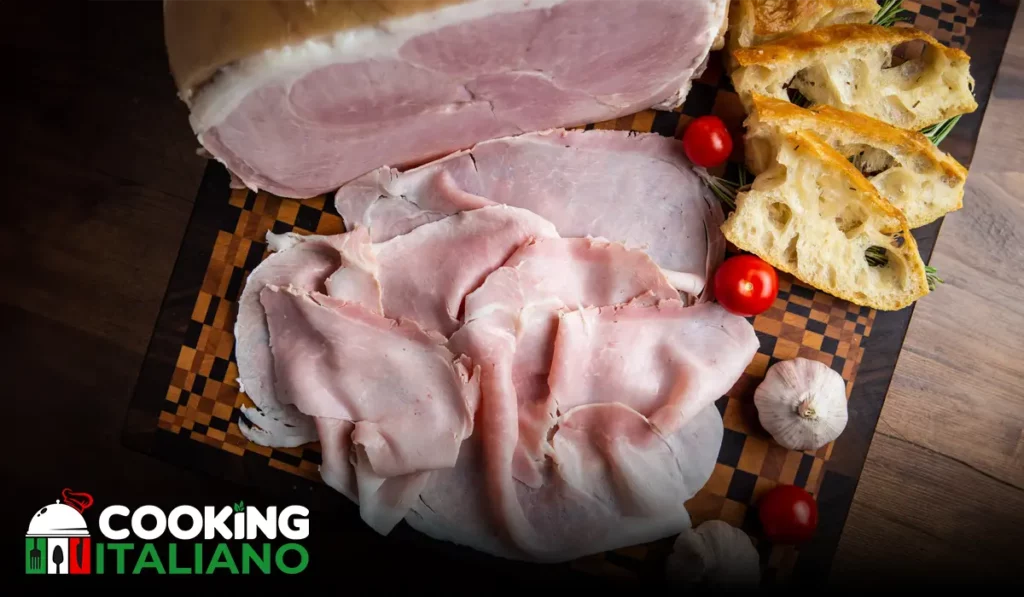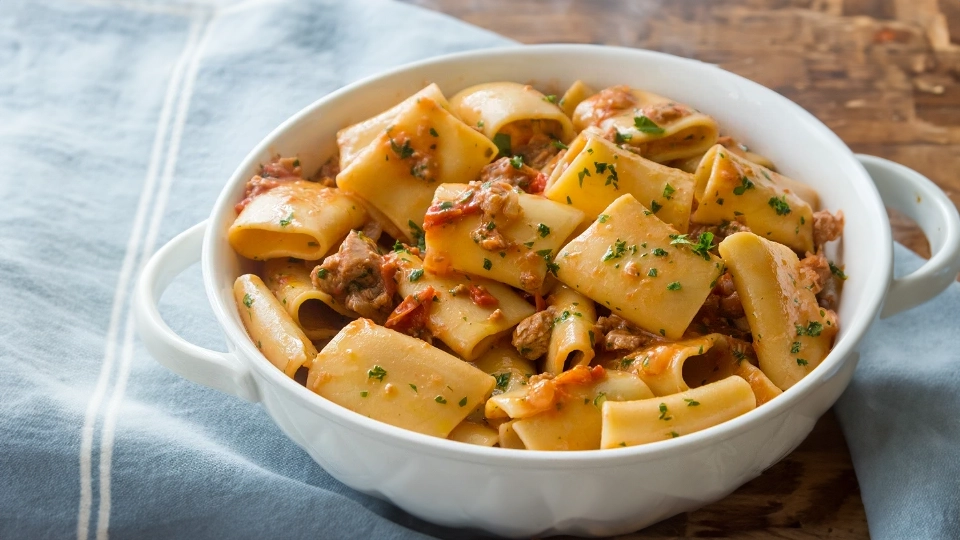There’s something magical about Italian cuisine that always brings a sense of warmth and conviviality to the dining table. For me, prosciutto cotto epitomizes this feeling. It’s a dish that combines simplicity with flavor, a true testament to the wonders of Italian cooking that food enthusiasts and cooking beginners alike can appreciate.

Today, I’m excited to share with you a recipe for homemade prosciutto cotto—an Italian classic that has graced many tables with its delicate taste and versatility. Whether you’re looking to impress your guests or simply treat yourself to an authentic Italian experience, this recipe is your gateway to culinary bliss.
Prosciutto Cotto

Ingredients
To recreate the tender and savory slices at home, you’ll need the following ingredients:
- 1 whole pork leg (around 5-7 pounds), deboned and skin removed
- 4 tablespoons of kosher salt
- 2 tablespoons of sugar
- 1 tablespoon of freshly ground black pepper
- 4 garlic cloves, minced
- 1 teaspoon of juniper berries
- 1 teaspoon of thyme leaves
- 2 bay leaves
- 4 cups of water
- Enough brine (1/4 cup of salt dissolved in 4 cups of water)
Instructions
The beauty of making it lies in the process—a journey that weaves patience and artistry into creating something truly special. Here’s how you can craft this delectable Italian ham right in your kitchen.
- Start by combining the kosher salt, sugar, ground black pepper, minced garlic, juniper berries, thyme leaves, and bay leaves in a bowl to create a seasoning mixture.
- Rub the seasoning mixture thoroughly all over the pork leg, making sure to cover all sides evenly. Let it marinate for at least 12 hours in the refrigerator, or up to 24 hours for a more intense flavor.
- Once the pork has marinated, rinse off the seasoning under cold water and pat dry with paper towels.
- Prepare your brine by dissolving 1/4 cup of salt in 4 cups of water. Submerge the pork leg in the brine, ensuring it is fully covered. Let it sit in the brine for another 24 hours in the refrigerator.
- After brining, remove the pork from the solution and pat it dry. Wrap it in cheesecloth and tie it with kitchen twine to maintain its shape.
- Preheat the oven to 275°F (135°C). Place the pork on a rack in a roasting pan and cook for about 2 hours or until the internal temperature reaches 155°F (68°C).
- Let the prosciutto cotto rest for at least 15 minutes before unwrapping and slicing it thinly.

DID YOU MAKE THIS RECIPE?
Tag @amcookingitaliano on Instagram and hashtag it #amcookingitaliano!
Tips for Customization
It is like a canvas that invites personal touches. Experiment with different herbs and spices—perhaps some rosemary or fennel seeds—to give it your signature twist. The key is to balance the flavors and let the rich taste of pork stand out.
How to Store
To preserve the freshness and flavors of your prosciutto cotto, wrap the unused portion in plastic wrap and store it in your refrigerator for up to 14 days. If you’ve made a larger batch, consider freezing it in portions for subsequent indulgences.
Conclusion
Indulging in homemade prosciutto cotto is a gratifying experience that not only fills your stomach but also your heart. As you savor the delicate slices, take a moment to appreciate the journey from simple ingredients to the masterpiece on your plate—an experience that goes beyond taste, connecting you to the heart of Italian culinary tradition.
Remember, cooking is not just about following a recipe—it’s about making each dish your own. I hope this prosciutto cotto recipe inspires you to create, experiment, and enjoy the pleasures of Italian cooking.
FAQs
Q: Can this be eaten without cooking?
A: No, unlike prosciutto crudo, which is cured and can be eaten raw, prosciutto cotto is a cooked ham and must be properly cooked as directed in the recipe.
Q: What’s the best way to serve?
A: Prosciutto cotto can be savored on its own or paired with a variety of foods. Try it sandwiched between crusty bread, as part of an antipasto platter, or even atop a pizza. The possibilities are endless!
Q: Is it possible to cure a homemade prosciutto cotto without nitrites?
A: While most commercial prosciutto cotto is cured with nitrates for preservation and color, making it at home gives you the choice to skip them. However, note that the absence of nitrates can change the shelf life and color of your ham.
Q: Does the pork leg have to be deboned for this recipe?
A: Yes, for homemade prosciutto cotto, it’s best to use a deboned pork leg as it allows for more uniform seasoning, cooking, and easier slicing once done.
Join me as we explore the wonders of Italian cooking together, one slice at a time. Happy cooking!
















